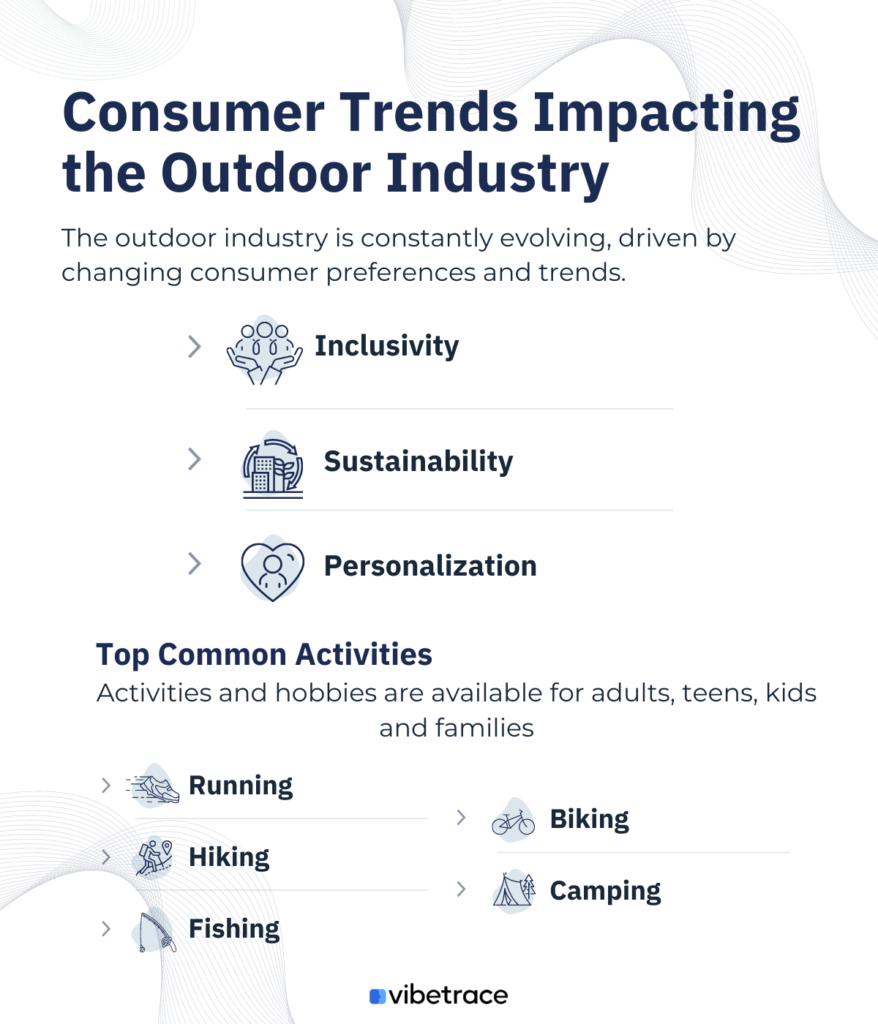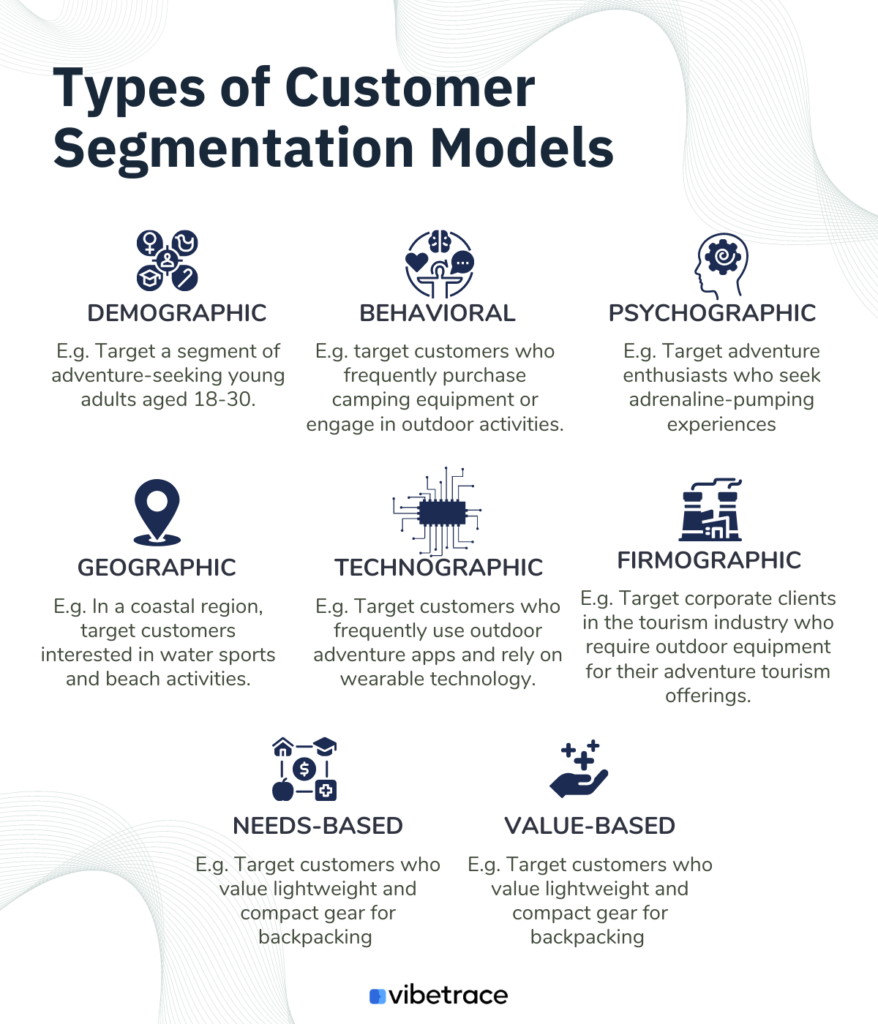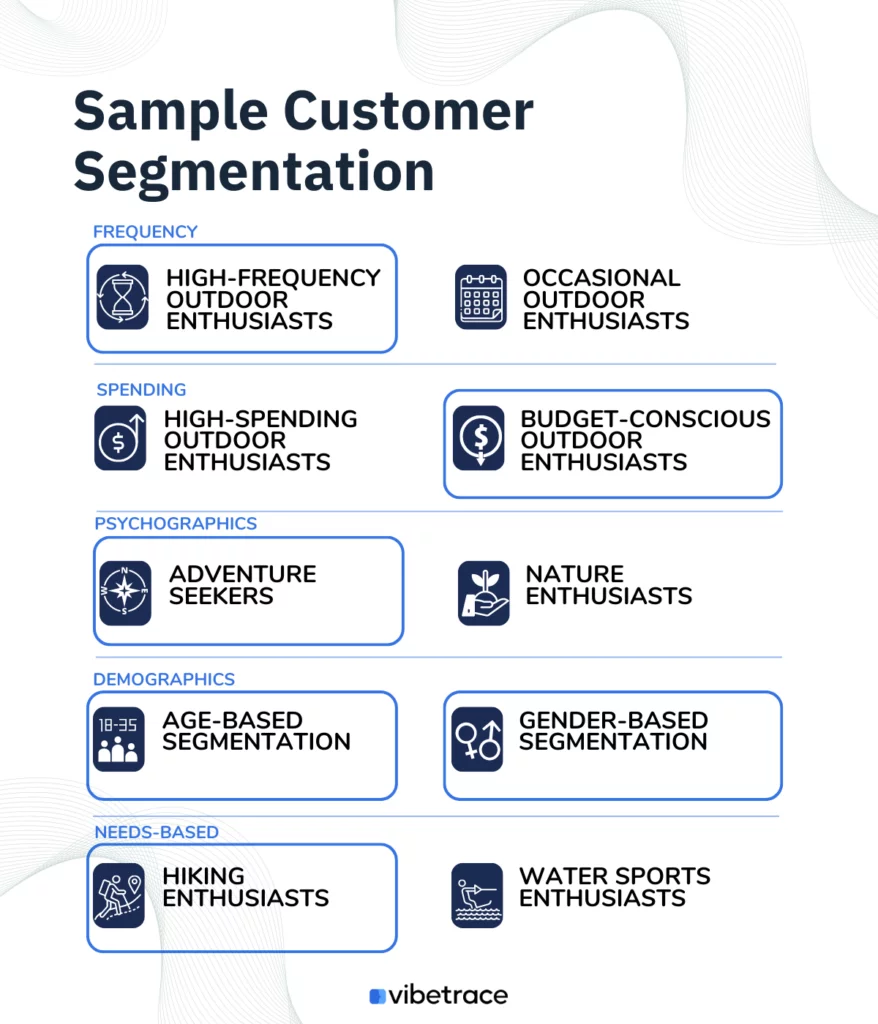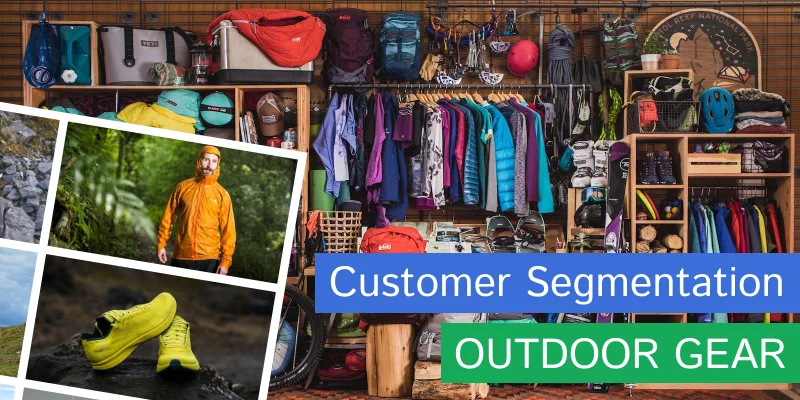Customers have their own preferences, interests, and choices, which means none of your customers are exactly alike. However, they can belong to specific groups depending on how you want to segment them, which is relevant to your business.
All this data goes into a Customer Database like the one offered by us.
If you are just starting your outdoor gear store, you might have already heard about how customer segmentation works by creating subgroups from your customers based on their shared characteristics.
Or if you have been in business for years, you must have already understood the importance of segmenting your customers in an outdoor gear store.
In this article, whether you are just starting or have been challenged by this industry, you will understand how customer segmentation works and how outdoor gear customers choose the right segmentation model.
Overview of Consumer Trends Impacting the Outdoor Industry
161 million US consumers spend most of their time outdoors, which accounts for 53% of the total population as of 2020.
According to recent data from 2021, this number increased to 164.2 million, representing a 1% growth compared to the previous year.
The top common outdoor activities include running, hiking, fishing, biking, and camping. And Overtime, trends change which has a big impact on the outdoor gear market.

Here are the top consumer trends that highly impacted the outdoor industry:
Inclusivity
This consumer trend focuses on the importance of creating a diverse and inclusive outdoor marketing environment. It emphasizes the need to cater to a wide range of individuals, regardless of their backgrounds, abilities, or interests.
Sustainability
Sustainability is a significant consumer trend that emphasizes the importance of environmentally-friendly practices in outdoor marketing. Consumers are increasingly seeking products and experiences that have a minimal impact on the environment.
Personalization
Personalization is a consumer trend that emphasizes the desire for tailored and customized experiences. In outdoor marketing, this trend involves understanding individual customer preferences and delivering targeted messaging and offerings.
Understanding the 164.2 Million US Consumers Who Spend Time Outdoors
Statistics show that by 2060, the US population can grow up to 419 million which would mean an increase in people’s participation in outdoor activities in the future.
Although among the 164.2 million people, a higher percentage are males with slightly young ages with an average of 37.4. They are recognized to be college graduates and have been living mostly in Suburban areas.
A few of the main reasons why they started outdoor activities are because they wanted to spend time getting some exercise, stay healthy, be out of the house, and maintain fitness.
Additionally, Some of the barriers that prevent participants to do outdoor activities are family demands, screen time with gadgets, resuming other activities, and traveling.
Customer Segmentation Model: Definition and Benefits
A customer segmentation model is an alternative way of dividing a group of consumers into smaller groups based on their similarities. This model allows you to create campaigns tailored to the specific needs of each group.
In the long run, this can help your business increase its return on investment (ROI).
One of the benefits of customer segmentation is increased consumer engagement. It can improve your marketing efforts by targeting audiences that often respond positively to your offerings.
Additionally, it will help you build more relationships with people.
Lastly, this model is expected to help increase customer satisfaction and loyalty. Customers often appreciate brands that connect with them and show genuine concern for their problems. By segmenting your customers, you can easily connect with them and provide them with relevant information that interests them.
Types of Customer Segmentation Models

Demographic Segmentation
This model divides customers based on demographic characteristics such as age, gender, income, education, occupation, and marital status.
Behavioral Segmentation
This model segments customers based on their behavior, including their purchase history, usage patterns, brand interactions, and engagement with marketing campaigns.
Psychographic Segmentation
Psychographic segmentation focuses on customers’ attitudes, values, interests, and lifestyle choices. It aims to understand their motivations, preferences, and psychographic profiles.
Geographic Segmentation
This model divides customers based on their geographic location, such as country, region, city, or climate. It takes into account factors like weather conditions and local outdoor opportunities.
Technographic Segmentation
Technographic segmentation considers customers’ technology usage, preferences, and digital behavior. It involves analyzing factors like device preferences, online platforms used, and digital engagement.
Firmographic Segmentation
Firmographic segmentation is primarily used in B2B contexts and segments customers based on organizational attributes. This includes factors such as company size, industry, location, and revenue.
Needs-Based Segmentation
Needs-based segmentation focuses on identifying and addressing specific customer needs or problem areas. It involves understanding customer pain points, desires, and motivations.
Value-Based Segmentation
Value-based segmentation categorizes customers based on their shared values, beliefs, and lifestyle choices. It aims to target customers who align with the brand’s core values.
Questions to Help You Choose the Right Segmentation Model for Your Outdoor Gear Store
To choose the right segmentation model for you, make sure that you have asked the following questions to guide you in making decisions:
What is your primary objective or goal?
Each campaign you make requires you to think of a goal so you can target customers that will engage with your advertisements. Goals can either be increasing sales, getting more engagement, improving return purchase rates, or simply creating brand awareness.
Having a specific goal can help you segment your consumers right and get more positive results from any activity of your business.
Which broad segment of customers will be most effective in achieving that goal?
Your target audience is as important as the campaigns you want to implement in the future so make sure you choose the right audience to which your advertisements will show.
If your goal is to make people aware of your new brand then you must ask yourself to whom should you deliver the message. If you want to sell camping gear then you can start with “campers”.
Who are the individuals that make up that broad segment?
As we have mentioned, each customer has their own distinct characteristics and may not all be similar at all times. so, break down the group of costumes you have chosen into subgroups by age, income, personality, geographic location, and interests.
This shows that campers may have more segments. Look back on the different types of segments that are mentioned.
Which segmentation model aligns best with your goal?
Once you have fully divided your consumers into groups, you must decide which is best for the goal you have set.
Could it be millennial campers to increase sales as most millennials have been more active outdoors, or maybe the current gen z generation to increase engagement and brand awareness as they are mostly the consumers who are active on social media?
This will result in more options for you which could be a bit challenging but once you got it right you will get good results.
Do you possess the necessary tools to gain insights into your consumers and assess the effectiveness of your segmentation model?
The right analytics tool is important to save your time, effort, and money. You might need more marketing especially if you are just starting your business so it is best to choose a good platform that will sustain the needs of your business.
Nonetheles if you are looking for email automation software, Vibetrace offers various features that are incredibly great for any kind of e-commerce business.
Example of Customer Segmentation for Outdoor Gear Consumers
Creating segments may not necessarily mean that you have to use all different types of segmentation models. This is why it is important to understand what would best fit your business.
Here are samples of choosing the right segmentation for your customers.
Try to test yourself and choose between the two options.
You can implement this by trying it for your outdoor gear business. Simply list down characteristics of consumers in general from each segment then pick between those which you have written.
This can help you segment your consumers properly.
Want to be up to date with Marketing?
Subscribe to our Retail CX newsletter!

Stay connected with what’s really important to optimize your digital revenues.
By clicking the button, you accept our Terms & Conditions. Also you will need to confirm your email address.
Frequency
High-frequency outdoor enthusiasts: Customers who engage in outdoor activities frequently and require regular gear updates and replacements.
Occasional outdoor enthusiasts: Customers who participate in outdoor activities occasionally and may have specific gear needs for specific occasions or seasons.
Spending
High-spending outdoor enthusiasts: Customers who are willing to invest in high-quality outdoor gear and are more likely to make premium purchases.
Budget-conscious outdoor enthusiasts: Customers who prioritize affordability and seek value-for-money options when purchasing outdoor gear.
Psychographics
Adventure seekers: Customers who thrive on adrenaline-pumping outdoor experiences and prioritize gear that enhances their thrill-seeking activities.
Nature enthusiasts: Customers who appreciate the natural world, engage in activities like bird-watching or nature photography, and prioritize gear that supports observation and exploration.
Demographics
Age-based segmentation: Customers are segmented by age groups, such as millennials, Generation X, or baby boomers, with each group having specific outdoor gear preferences and needs.
Gender-based segmentation: Customers are segmented by gender, recognizing that males and females may have different preferences and requirements for outdoor gear.
Needs-Based
Hiking enthusiasts: Customers who prioritize gear suitable for long hikes, including lightweight backpacks, sturdy hiking boots, and moisture-wicking clothing.
Water sports enthusiasts: Customers who require gear specifically designed for water activities, such as kayaking, surfing, or paddleboarding.
To increase engagement with your chosen niche, you can target a specific segment of customers who exhibit a set of following characteristics. This will help you identify your target market easily so you don’t have to keep testing plans that might not even work for your business.
E.g. If you want to target hikers, the following can be their characteristics:

- High frequency of outdoor activities
- Budget-consciousness
- Adventure Seeker
- Aged between 18 and 35
- Predominantly male, and
- Specifically interested in hiking.
Getting Started with Customer Segmentation
Customer segmentation is very important for your outdoor gear store. This will help you identify the people who look forward to your brand. It might as well surprise you in the future that one group of consumers has various segments to use.
Before you begin your campaigns make sure that you understand customer segmentation. This would help you to fulfill all the needs of your potential customers leading to an increase in your conversion rate.
In addition, make sure you are using the right tool so you won’t mess up all the customer data in the future once you have an increased number of emails.
Vibetrace is an email automation software with several features including an organized mailing list in which you can separately group depending on how you have chosen to segment them.
Start segmenting your customers with Vibetrace today!

